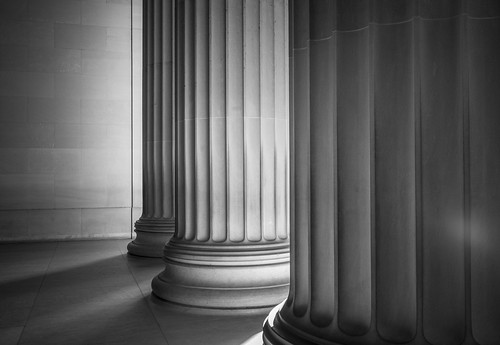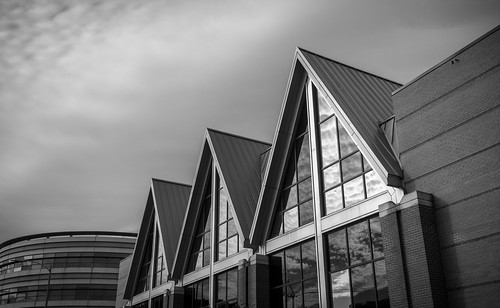 |
| Composition wise, this photograph taken at the Lincoln Memorial sums up this blog post in one photograph. |
Com•po•si•tion noun : The way something is put together or arranged : the combination of parts or elements that make up something.Every lecture on composition I've ever heard discusses the rule of thirds. Heck, the one semester I taught the basic photography course at Temple University it was the first thing I talked about after shutter speeds and f-stops. And it seemed to come up over and over even when I was teaching advanced classes.
We are all are aware of composition even if we don't know it. Why does some art appeal to us and something very similar does not? I bet in many cases it comes down to composition or as the above definition states, the arrangement of elements.
So what if we went beyond two-dimensions and thought in terms of three-dimensions. What is it that draws you into a photograph? If the rule of thirds looks at the 2D surface, then it makes sense to me that the third dimension looks into the photograph from foreground to background. Think in terms of depth or layers, terms you might already be familiar with. Again, just trying to think differently.
 |
| Rule of thirds across and into the photograph is what makes this photograph of the St. Charles Borromeo Catholic Church in Arlington, Va., so appealing to me. |
And remember to understand the rules of composition, or any rules in photography, means you can break them. I know there are some photographers that never learned the rules and yet continue to create wonderful images because they just have a sense of composition.
When you see a photograph or piece of art you like, study the composition. Over time as you take photographs you will instinctively put into practice good composition habits without even thinking about it. And as people begin to admire your work, even photographs of the mundane like my examples here, you will begin to understand why. Good composition. It will be ours, and other photographers, secret.
* The rule of thirds is a concept in which a photographic frame is divided in nine imaginary sections creating points where those lines intersect. Placing a subject at one of those points, essentially off center, generally makes for a more pleasing image.
 |
| Rule of thirds example. |

No comments:
Post a Comment